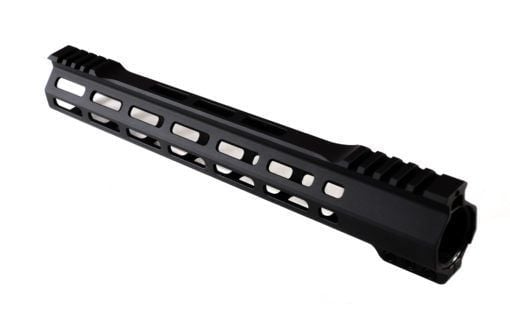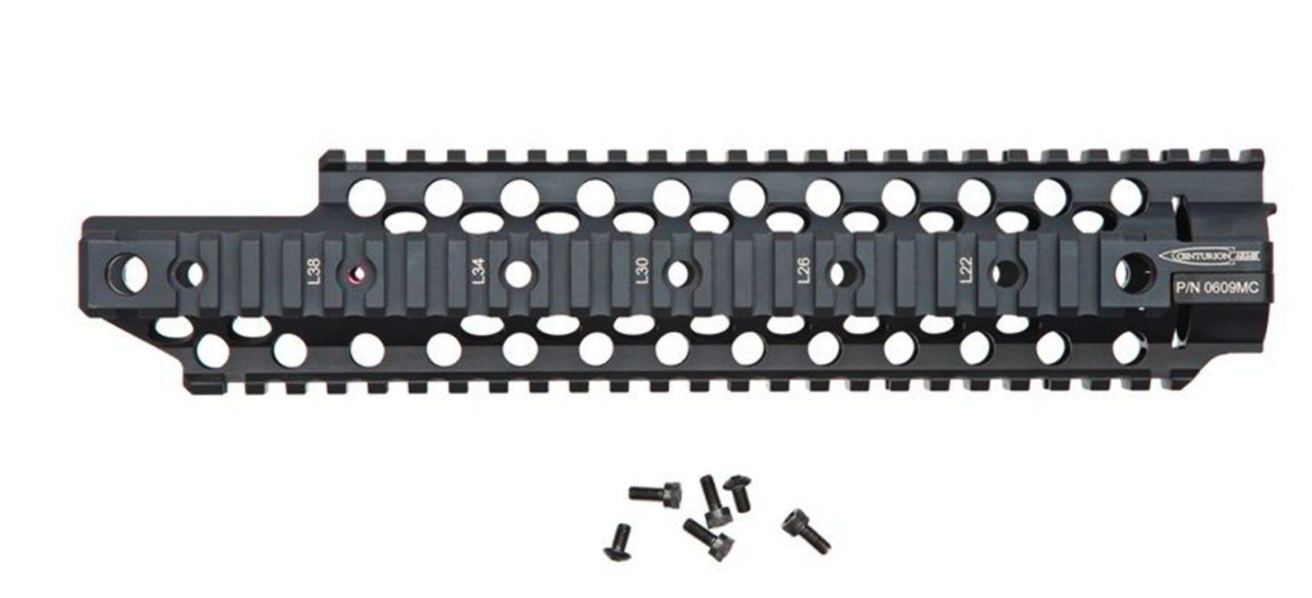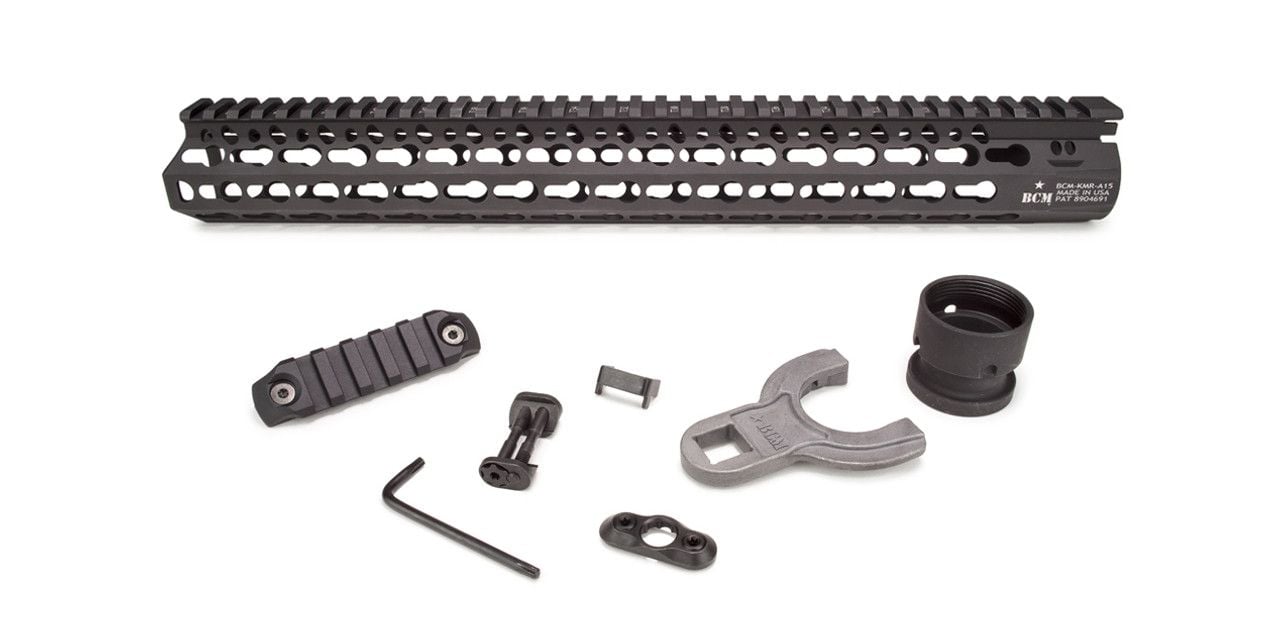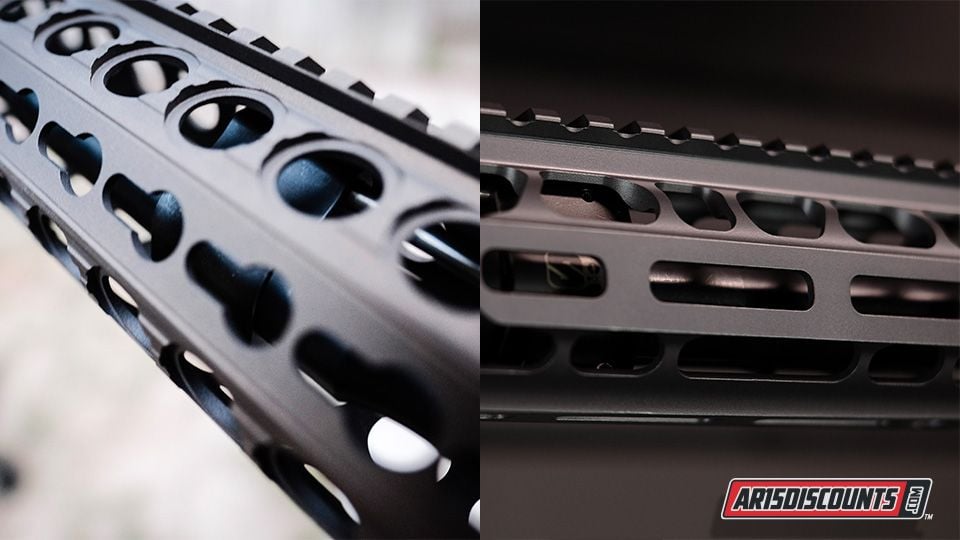AR Rifle, AR-15 Accessories
The Evolution of AR-15 Handguards: From Picatinny to KeyMod to M-LOK
Table of contents
If you’re new to ARs, as you research, you may come across things that seem appropriate, yet are actually outdated…a key area where this occurs is with handguards. If you’re not familiar with the details, you could end up with an AR that no longer accepts now-common accessories. As such, you need to be extra careful when purchasing a handguard. This means that for the most part, the handguard you select needs to be M-LOK.
Why does having an M-LOK handguard matter? Selecting the right handguard for your AR-15 matters for performance, comfort, and customization. Handguards have moved from heavy Picatinny quad-rails to slimmer, modular systems like KeyMod and M-LOK. This guide explains why evolution is important, why M-LOK is the current industry standard, why KeyMod is no longer recommended for new builds, and how Magpul shaped the development of M-LOK.

The Picatinny Rail Era
Early AR-15 handguards were built around quad-rail systems using the Picatinny, or MIL-STD-1913, standard. These rails allowed shooters to mount lights, lasers, grips, and other accessories directly to the rifle. While they offered flexibility, the trade-offs were significant. Picatinny handguards added considerable weight, made rifles bulky and front-heavy, and were uncomfortable to grip without rail covers. Accessory placement was also restricted to pre-set rail positions, limiting customization. As shooters looked for more ergonomic and lightweight options, manufacturers began developing new designs.

That said, some shooters still have love for the old-school Picatinny rail, with new offerings sometimes still hitting the market. See the EWS E-15 video below as an example…In comparison to KeyMod, which we will discuss below, sometimes a Picatinny rail still makes some sense, depending on your plans and needs.
The Introduction of KeyMod
In 2012, KeyMod entered the market as an open-source mounting system that used keyhole-shaped slots to attach accessories. The design offered a noticeable improvement over Picatinny rails. It produced a lighter, sleeker handguard with a smoother gripping surface that was more comfortable in the hands. Accessories could be mounted anywhere along the slots, improving flexibility and customization for builders seeking lightweight AR-15 configurations. Still, KeyMod had shortcomings. The keyhole slots required precise alignment to achieve a secure connection, and users sometimes reported accessories loosening under recoil or extended use. These flaws opened the door for a better solution.

The problem is that occasionally, you will see ARs with KeyMod or KeyMod handguards for sale. That’s fine if you want that, but for the newer builder or buyer, they should know that buying anything in KeyMod in 2025/2026 is going to severely limit what they can add to their rifles moving forward. The bottom line is that the industry has almost completely moved on from KeyMod.
M-LOK Becomes the Standard
Magpul Industries introduced M-LOK, short for Modular Lock, in 2014 as a direct response to KeyMod’s weaknesses. M-LOK used rectangular slots with a robust T-nut attachment system that delivered greater strength and reliability. It proved easier to install and remove accessories, requiring less precision during mounting. M-LOK handguards offered a lightweight, low-profile option that worked well with modern AR-15 builds. Perhaps most importantly, manufacturers across the industry quickly adopted M-LOK, leading to a wide range of compatible accessories. Today, M-LOK has become the standard choice for new AR-15 builds thanks to its durability, versatility, and widespread support.
Why KeyMod Is Not Recommended
Although KeyMod once offered an innovative step forward, it has been largely surpassed by M-LOK. The firearms industry has shifted away from producing KeyMod-compatible parts, which makes accessories and upgrades increasingly difficult to find. M-LOK’s superior strength, easier installation, and long-term support from manufacturers have made it the clear winner in performance comparisons. For anyone building or upgrading an AR-15 today, M-LOK is considered the smarter, future-proof option, while KeyMod has become outdated.

Magpul and the Development of M-LOK
Magpul Industries, founded in 1999 by Richard M. Fitzpatrick, started with the simple concept of creating accessories that improved functionality under stress, beginning with the original “magpul” magazine puller. Over time, Magpul grew into one of the most respected names in firearms accessories, producing magazines, stocks, grips, and more. In 2014, Magpul’s engineers developed M-LOK to address the weaknesses of KeyMod and create a more durable, user-friendly solution. By releasing M-LOK as an open-source standard without licensing fees, Magpul allowed other manufacturers to adopt it freely, ensuring its rapid acceptance. Today, M-LOK reflects Magpul’s influence on the AR-15 world, offering shooters a reliable and modern handguard platform.
Conclusion
The history of AR-15 handguards illustrates the industry’s move toward lighter, more versatile, and user-friendly solutions. Picatinny rails provided a foundation but were heavy and bulky. KeyMod offered a step forward but fell short in durability and long-term support. M-LOK has since emerged as the clear standard, combining strength, adaptability, and broad industry backing. For today’s AR-15 builder, simply put, M-LOK is the best choice for performance and customization.

